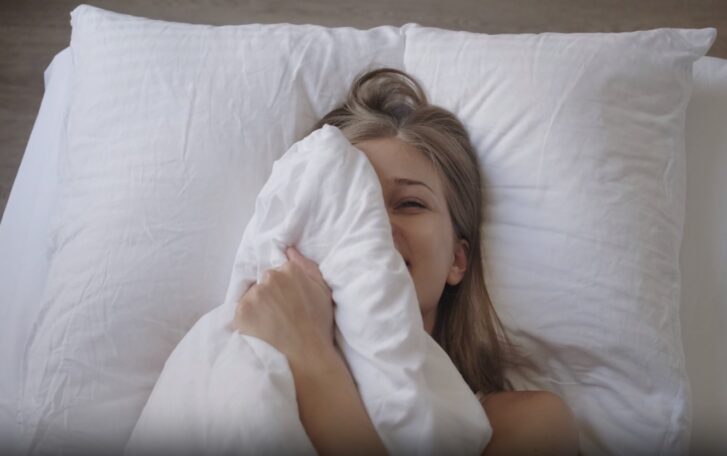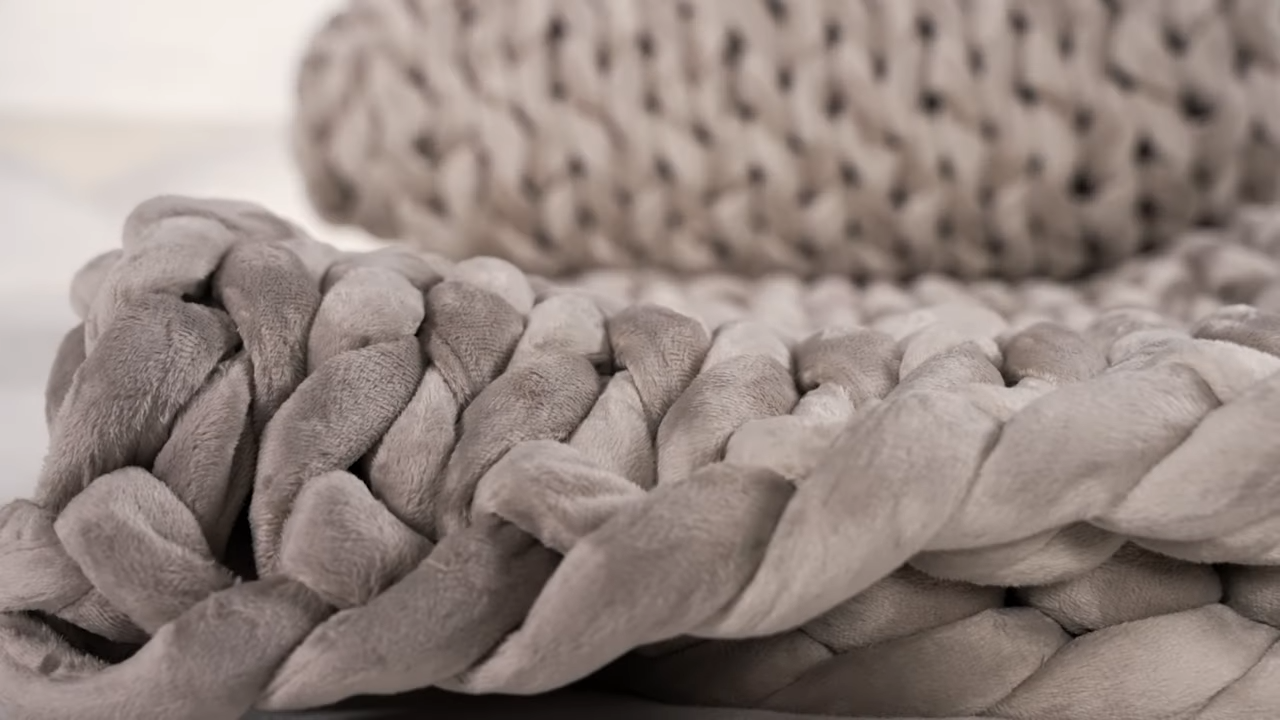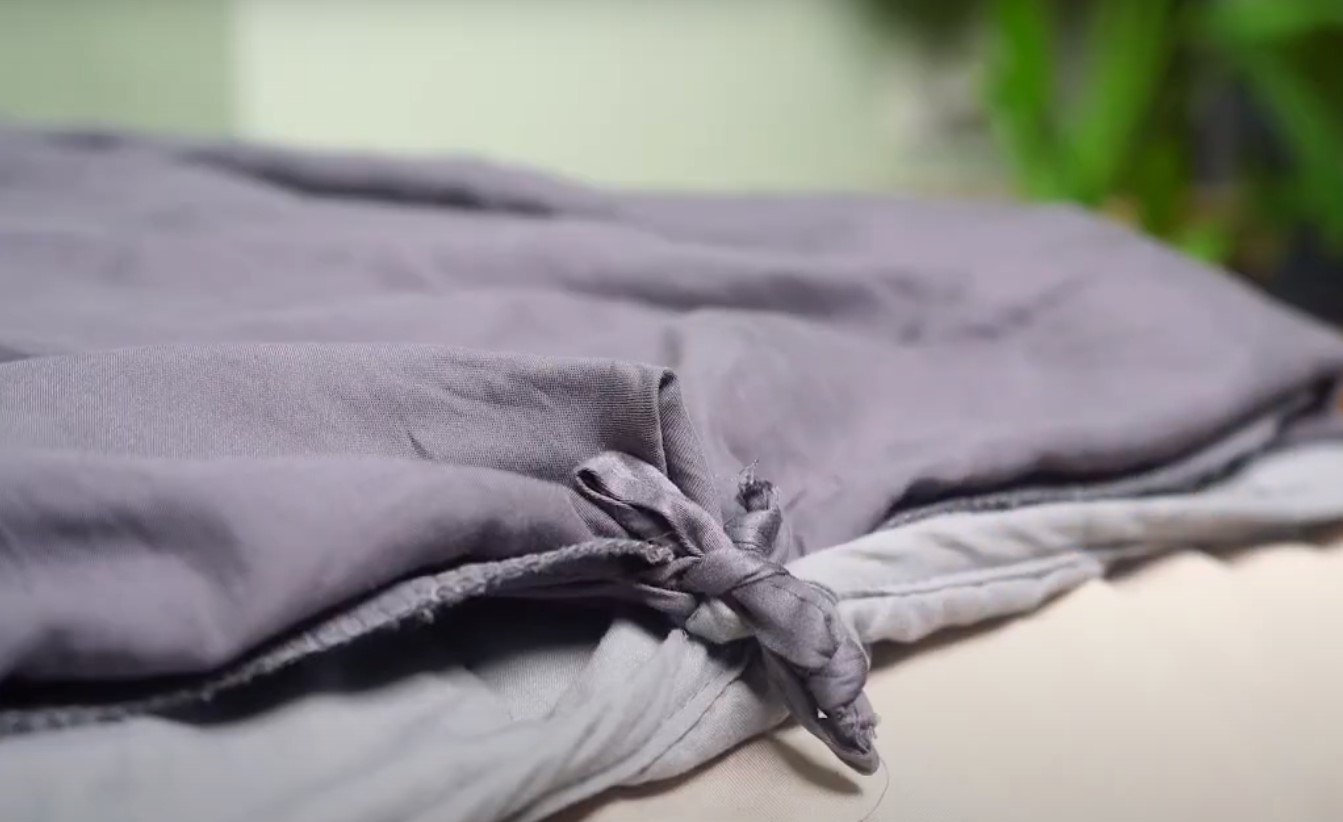Have you ever wondered why some people sleep better with a heavy blanket on them? If you are one of them, you might be interested in learning more about weighted blankets. These are special blankets that are filled with materials such as glass beads, plastic pellets, or sand to make them heavier than regular blankets.
They are designed to apply gentle pressure on your body, creating a soothing sensation that can help you relax and fall asleep faster. Weighted blankets can also provide various benefits for people who suffer from conditions such as insomnia, anxiety, autism, attention deficit hyperactivity disorder (ADHD), and restless legs syndrome (RLS).
However, not all weighted blankets are the same. The weight of the blanket is an important factor that can affect your comfort and safety. In this article, we will help you choose the right weight for your weighted blanket
Why the Weight Matters?
The optimal weight of the blanket can vary depending on your personal preference, sensitivity, comfort level, and body weight. Some people may prefer a lighter blanket, while others may enjoy a heavier one. Generally, the recommended weight of the blanket is about 10% of your body weight, but you can adjust it according to your needs.
One of the key features of a weighted blanket is that it applies gentle but firm pressure on your body when you use it. This pressure creates a sensation similar to being hugged, swaddled, or cuddled, which can have a calming effect on your nervous system. This is known as deep pressure stimulation (DPS) or pressure therapy.
DPS can help your body switch from the sympathetic nervous system, which is responsible for the fight-or-flight response, to the parasympathetic nervous system, which is responsible for relaxation, stress reduction, and sleep regulation. By doing so, DPS can lower your heart rate, blood pressure, and cortisol levels, while increasing your serotonin and melatonin levels .
These changes can help you feel more relaxed, less anxious, and more ready to sleep. Using a blanket that is too heavy for you can have some potential risks, such as difficulty breathing, overheating, or feeling trapped.
If you have any medical conditions that affect your respiratory or circulatory systems, you should consult your doctor before using a weighted blanket. You should also avoid using a weighted blanket on infants, toddlers, or people who cannot remove the blanket by themselves.
How to Make the Right Choice?
The most important factor to consider when choosing this product is the weight itself. The weight should be proportional to your body weight, so that it can provide enough pressure without being too heavy or too light. As we already mentioned, a general guideline is to choose a blanket that is about 10% of your body weight, plus or minus a few pounds.
For example, if you weigh 150 pounds, you can choose a blanket that weighs between 12 and 18 pounds. However, this guideline is not a rule, and you may prefer a different weight depending on your personal preference, comfort level, mobility, and temperature. Some people may like a lighter blanket, while others may enjoy a heavier one.
There are those who may find a blanket that is too heavy to be uncomfortable, restrictive, or suffocating, while others may find a blanket that is too light to be ineffective, loose, or cold. Also, certain people may have difficulty moving or adjusting a blanket that is too heavy, while others may have no problem with it.
Moreover, it may feel too hot or sweaty under a blanket that is too heavy, while it may feel cozy and warm for a certain group. You should choose a blanket that suits your needs and preferences, and that makes you feel comfortable and relaxed.
| Body Weight Range | Recommended Weight |
|---|---|
| 40-70 lbs | 5-8 lbs |
| 70-100 lbs | 8-12 lbs |
| 100-150 lbs | 12-18 lbs |
| 150-200 lbs | 18-25 lbs |
| 200+ lbs | 25+ lbs |
How to Care for a Weighted Blanket?
A weighted blanket is not only a cozy and comforting item, but also an investment in your health and well-being. Therefore, it is important to take good care of it and make it last as long as possible. The way you care for your weighted blanket depends largely on the type of materials and fillings used in its construction, as well as the manufacturer’s instructions.
The most common materials used for the exterior fabric of weighted blankets are cotton, fleece, or linen. These materials are usually soft, plush, and breathable, and can be washed and dried in a machine, unless otherwise specified by the manufacturer.
However, you should always check the label for the recommended temperature and cycle settings, and avoid using bleach or fabric softener, as they may damage the fabric or cause allergic reactions.
The fillings used inside weighted blankets can vary widely, and they have different effects on the durability, washability, and maintenance of the blanket. Some of the most popular fillings are:
- Plastic poly pellets: These are small plastic beads that are flexible and easy to shape. They are also hypoallergenic, odorless, and washable, but they may melt or deform if exposed to high temperatures. Therefore, you should wash them in cold water and dry them on low heat or air dry them.
- Micro glass beads: These are tiny glass beads that are smooth, dense, and heavy. They are also hypoallergenic, odorless, and washable, but they may break or crack if handled roughly. Therefore, you should wash them in cold water and dry them on low heat or air dry them.
- Steel balls or beads: These are metal balls or beads that are smooth, durable, and heavy. They are also washable, but they may rust or corrode if exposed to water or moisture. Therefore, you should avoid washing them or use a waterproof cover to protect them.
- Pebbles: These are natural stones that are smooth, heavy, and cheap. However, they are not washable, and they may leak, clump, or damage the fabric over time.
To care for your weighted blanket properly, you should follow these tips:
- Use a removable cover for your blanket that is made of a light and breathable fabric, such as cotton or bamboo. This will make it easier to clean and protect the blanket from dirt, stains, and wear and tear.
- Wash your blanket only when necessary, and follow the manufacturer’s instructions carefully. Do not wash it more than once a month, as frequent washing may damage the fabric or the fillings.
- Dry it thoroughly before using it or storing it. Do not use high heat or tumble dry, as this may cause the fillings to melt, break, or clump. Air dry it in a well-ventilated area, or use low heat or a gentle cycle in a dryer.
- Store it in a cool, dry, and dark place, away from direct sunlight, heat, or moisture. Do not fold or compress your blanket, as this may cause the fillings to shift or clump. Instead, roll or hang loosely, or use a large storage bag or container.
What Are the Main Health Benefits?
They may help reduce stress and anxiety by providing deep pressure stimulation, which can activate the parasympathetic nervous system and lower the levels of cortisol, the stress hormone. This can also improve mood and relaxation, as well as lower blood pressure and heart rate.
Another benefit is that it may help improve sleep quality and quantity by creating a feeling of security and comfort, which can make it easier to fall asleep and stay asleep. They may also increase the levels of melatonin, the sleep hormone, and serotonin, the neurotransmitter that regulates mood and sleep.
Additionally, this product may reduce the symptoms of restless legs syndrome (RLS), a condition that causes unpleasant sensations and urges to move the legs at night, which can interfere with sleep. There is a proven connection with people with autism spectrum disorder (ASD), especially children, by providing sensory input and calming effects, which can reduce the frequency and severity of meltdowns, tantrums, and self-injurious behaviors.
They may also improve social skills, communication, and attention span, as well as reduce anxiety and sensory overload. I also have to mention that it can help people with attention deficit hyperactivity disorder (ADHD), especially children, by improving focus, concentration, and impulse control, as well as reducing hyperactivity and distractibility.
There are research studies about the real benefits. The following one, provided by the American Academy of Sleep Medicine , is about the positive effects on those with insomnia:
“Participants in the weighted blanket group were almost 26 times more likely to experience a decrease of 50% or more in their insomnia severity compared with the control group, and they were nearly 20 times more likely to achieve remission of their insomnia.”
They may also enhance academic performance, behavior, and self-esteem, as well as reduce anxiety and stress. Weighted blankets may help people with other mental health conditions, such as depression, bipolar disorder, post-traumatic stress disorder (PTSD), and obsessive-compulsive disorder (OCD), by providing comfort, security, and emotional regulation, as well as reducing negative thoughts and feelings. They may also complement other forms of therapy, such as medication, counseling, or cognitive-behavioral therapy (CBT).
FAQs
What are the benefits of weighted blankets for children?
Weighted blankets can provide a sense of security and comfort for children, especially those who have autism, ADHD, or anxiety. They can also improve sleep quality, mood, and behavior, as well as reduce stress and sensory overload.
How can I make my own weighted blanket?
You can make your own weighted blanket by using materials such as fabric, thread, scissors, pins, measuring tape, sewing machine, and fillings such as plastic pellets, glass beads, or rice. You can follow the steps in this tutorial or watch this video to learn how to make your own weighted blanket.
Are weighted blankets safe for pets?
Weighted blankets are generally safe for pets, as long as they are not too heavy or too hot for them. However, you should monitor your pet’s behavior and comfort level when using a weighted blanket, and remove it if they show any signs of distress, discomfort, or overheating. You should also keep your weighted blanket away from your pet when not in use, as they may chew or scratch it and damage the fabric or the fillings.
How much does a weighted blanket cost?
The cost of a weighted blanket depends on several factors, such as the size, weight, material, filling, quality, and brand of the blanket. Generally, a weighted blanket can cost anywhere from $50 to $300, depending on these factors. You can also look for discounts, coupons, or sales to save some money on your purchase.
Can I use a weighted blanket with an electric blanket or a heating pad?
It is not recommended to use a weighted blanket with an electric blanket or a heating pad, as this may cause overheating, fire hazards, or damage to the blankets. If you need extra warmth, you can use a regular blanket or a sheet under or over your weighted blanket, or choose a weighted blanket that has a warmer fabric or filling.
Conclusion
Weighted blankets are a popular and effective way to improve your sleep, mood, and health. They can provide a soothing and comforting sensation that can help you relax and fall asleep faster, as well as reduce stress, anxiety, and other mental health issues. However, choosing the right weight for your weighted blanket is crucial, as it can affect your comfort and safety.
Related Posts:
- How To Wash a Weighted Blanket in 2024 - A Detailed Guide!
- Everything You Need to Know About Sucralose: A Guide…
- Does ADHD Medication Help with Social Skills? -…
- The Cost of A Psychological Evaluation - Everything…
- Psychological Facts About Soulmates You Might Not…
- What Role do Microbiomes Play in Urinary Tract…

















